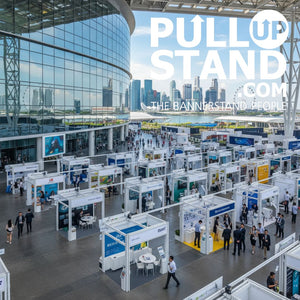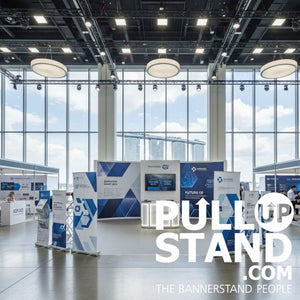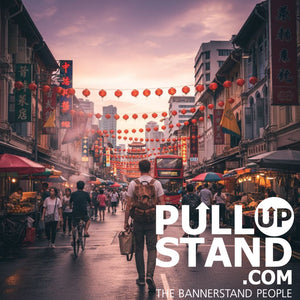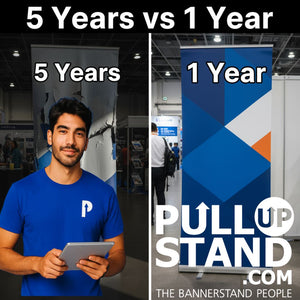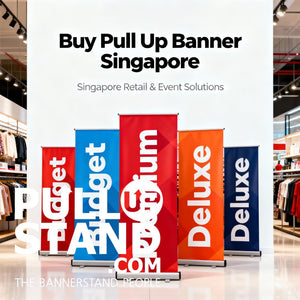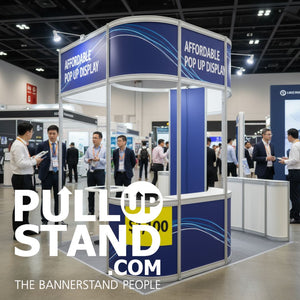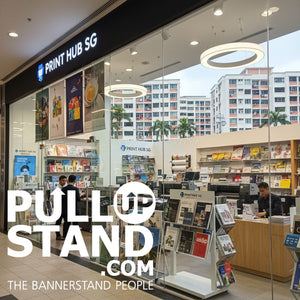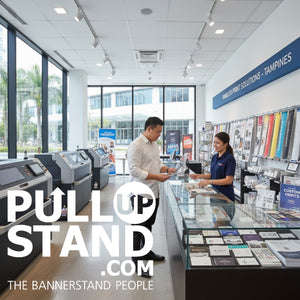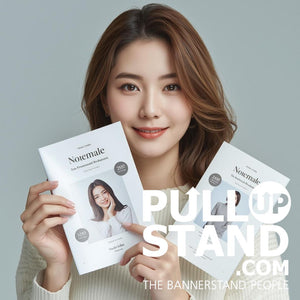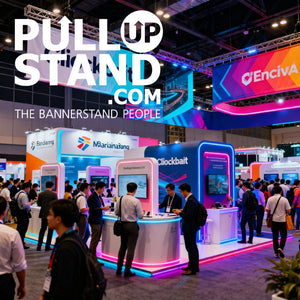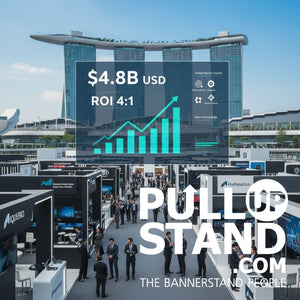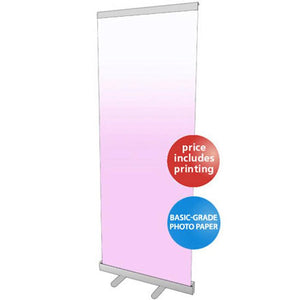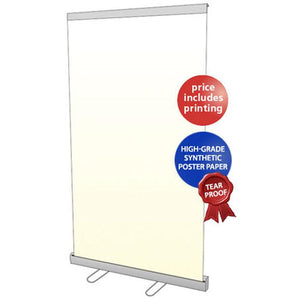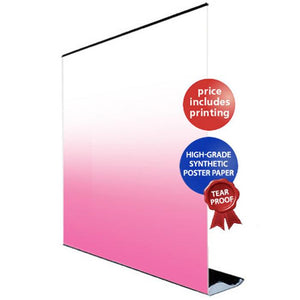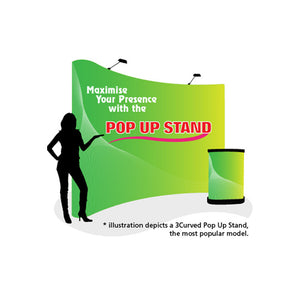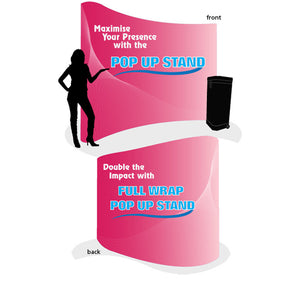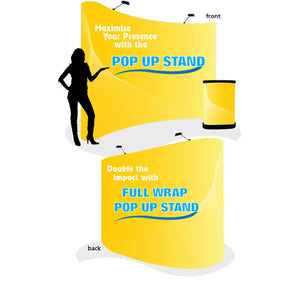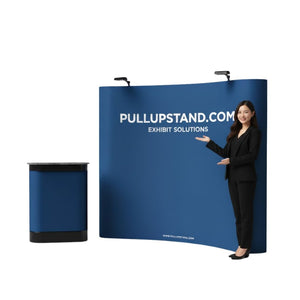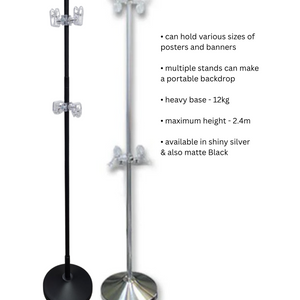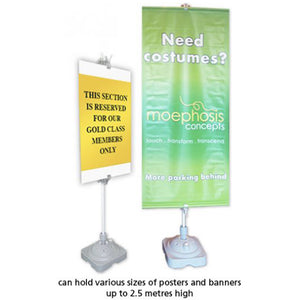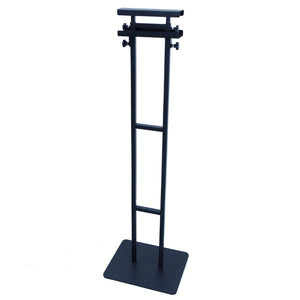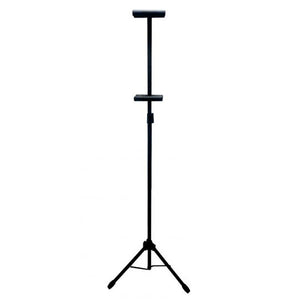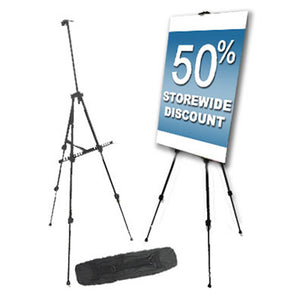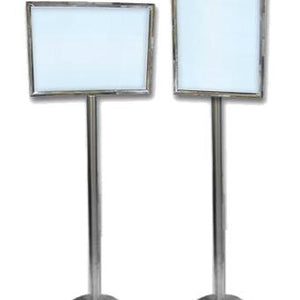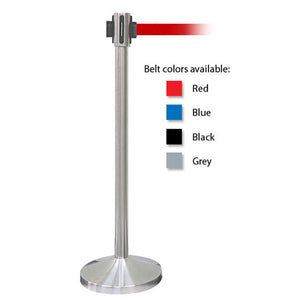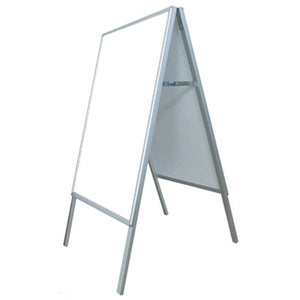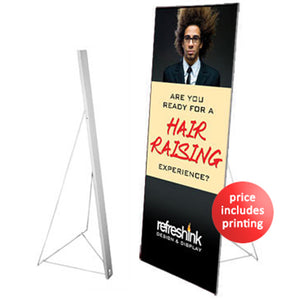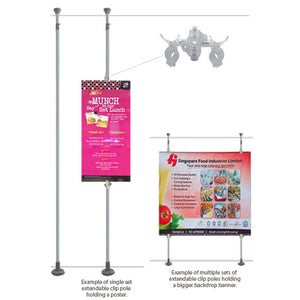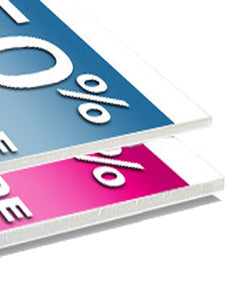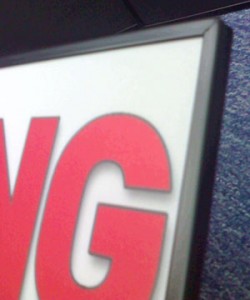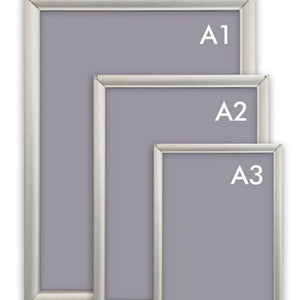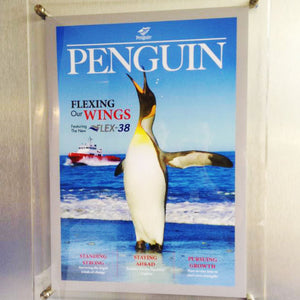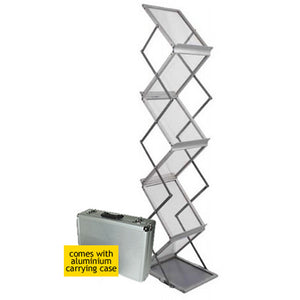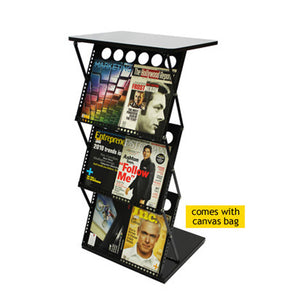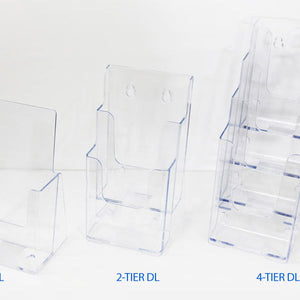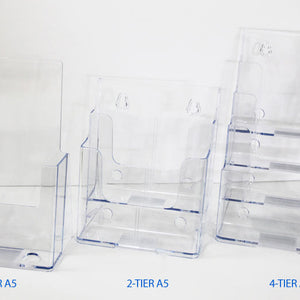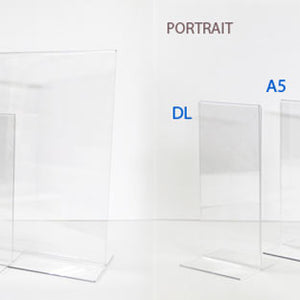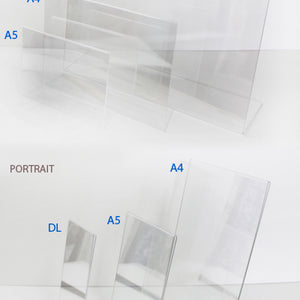A Complete Guide to Foamboard Posters
Making a strong visual impact is vital in today's busy world. Yet, many businesses struggle to find display solutions that blend quality, durability, and cost-effectiveness. Foamboard posters step in as the perfect answer for countless display needs—from trade shows to retail environments.
In this complete guide, we'll explore everything about foamboard posters: what makes them special, how they're made, best uses, and tips for getting the most from your investment. Whether you're planning a corporate event, retail promotion, or wedding celebration, this guide will help you make smart choices for your next display project.
What Are Foamboard Posters?
Foamboard posters stand out as rigid yet lightweight display materials that perfectly combine stunning visual impact with practical durability. Unlike standard paper posters that frustratingly curl at the edges and tear easily, foamboard posters maintain their flat shape even during extended use. Furthermore, they offer professional presentation that immediately elevates your marketing materials.
At their core, foamboard posters consist of a sandwich-like structure: a layer of polystyrene foam between two sheets of high-quality paper facing. As a result, this three-layer design creates exceptional stability without adding excess weight, which makes these posters perfect for temporary displays and events. Additionally, their construction provides a premium feel that standard posters simply cannot match.
The flat, stable surface of foamboard posters helps them stand out effectively in busy spaces. Consequently, their clean edges and professional look elevate your brand image instantly. Moreover, they can be easily mounted on walls, placed on easels, or used with specialized display stands, thereby offering versatility for various settings and occasions. Therefore, businesses increasingly choose foamboard posters for situations where appearance and durability both matter significantly.
Materials & Manufacturing Process
Understanding the materials and manufacturing process behind foamboard posters helps you appreciate their unique qualities. Therefore, it's important to recognize that these display solutions aren't simply printed posters—they're engineered products specifically designed for maximum visual impact and practical use. Additionally, knowing how they're made lets you make better decisions when ordering.
Core Materials
The heart of any foamboard poster is its three-layer construction, which works together to create a rigid yet lightweight product:
- Center Layer: Polystyrene foam core (95-98% air) provides excellent rigidity while maintaining extremely light weight
- Outer Facings: Usually white clay-coated paper offering a smooth printing surface, though black kraft paper options exist for special applications
- Adhesive Bonds: High-quality adhesives permanently join the layers into a single stable structure that resists separation
Premium foamboard (sometimes called Kapaline board in Singapore) includes an additional art card layer, thus creating enhanced stability and print quality compared to standard options. In addition, for archival applications, acid-free foam boards with buffered surface paper prevent degradation of mounted artwork over time. Consequently, these premium options last significantly longer than basic foamboard products.
Manufacturing Process
The production of foamboard posters typically follows these key steps to ensure quality and consistency:
- Board Production: First, polystyrene beads are expanded and formed into sheets, then carefully laminated with paper facings
- Cutting: Next, large boards (typically 4' x 8' or 1.2m x 2.4m) are precisely cut to required sizes
-
Printing: Following that, two primary methods are used:
- Direct printing onto the board surface using UV or latex inks for seamless appearance
- Printing on high-quality sticker or paper, then mounting to the board for vibrant colors
- Finishing: Subsequently, optional lamination (matte or gloss) adds protection and visual enhancement
- Custom Cutting: Finally, boards can be die-cut into custom shapes for specialty displays when needed
The manufacturing approach directly impacts quality and longevity of the final product. For instance, direct printing tends to create a more seamless appearance, while mounted prints might offer more vibrant colors but risk bubbling if not professionally applied. Therefore, understanding these differences helps you select the right production method for your specific display needs.
Sizes, Thicknesses & Finishes
Choosing the right specifications for your foamboard poster makes all the difference in its visual impact and durability. Therefore, it's crucial to understand the available options before placing your order. Additionally, each project has unique requirements, so knowing these specifications helps you select what works best for your specific needs.
Standard and Custom Sizes
Foamboard posters come in various standard sizes to fit different display needs. Furthermore, knowing which size suits your application best saves you money while ensuring maximum impact:
| Size Category | Dimensions | Common Applications |
|---|---|---|
| Small | A4 (210 x 297mm) 8" x 10" (203 x 254mm) |
Tabletop displays, counter promotions, menu stands |
| Medium | A3 (297 x 420mm) 16" x 20" (406 x 508mm) 18" x 24" (457 x 610mm) |
Store signage, event information, directional signs |
| Large | A2 (420 x 594mm) A1 (594 x 841mm) 24" x 36" (610 x 914mm) |
Trade show graphics, promotional displays, presentations |
| Extra Large | A0 (841 x 1189mm) 36" x 48" (914 x 1219mm) 48" x 96" (1219 x 2438mm) |
Backdrops, major displays, photo walls, stage decorations |
Beyond standard sizes, many suppliers offer custom dimensions to fit specific display needs. Moreover, some even provide die-cutting services for non-rectangular shapes, thereby creating standees, cutouts, or specialty displays with unique visual appeal. Consequently, you can achieve exactly the look you want for your brand or message.
Thickness Options: 3mm vs. 5mm
Thickness greatly affects your foamboard poster's rigidity and durability. Therefore, choosing the appropriate thickness is essential for your display's success:
- 3mm Thickness: Lighter weight and more economical. Best for smaller sizes (up to A2) or temporary displays. However, it may bend slightly with larger dimensions, particularly when displayed vertically.
- 5mm Thickness: Provides greater stability and rigidity, which is especially important for larger formats. Generally recommended for professional displays, trade shows, and any posters larger than A2 size. Furthermore, this thickness withstands more handling without damage.
In Singapore, 5mm is the most commonly available thickness for professional applications, thus striking the perfect balance between stability and weight. Additionally, for truly substantial displays, some suppliers offer 10mm options, though these are less common and considerably heavier. Consequently, they're usually reserved for very large installations where maximum rigidity is required.
Finish Types: Matte, Gloss, and Lamination
The finish of your foamboard poster affects both its appearance and longevity. As a result, considering your display environment and usage pattern helps determine the ideal finish:
- Matte Finish: Reduces glare and fingerprints, thereby providing a sophisticated look. Best for text-heavy posters or displays viewed under bright lighting. Additionally, many professional environments prefer this finish for its understated elegance.
- Gloss Finish: Creates vibrant colors and makes images "pop." Therefore, it's ideal for photo-heavy designs, food imagery, or displays where visual impact is paramount. Moreover, retail environments often benefit from this attention-grabbing finish.
-
Lamination: Adds a protective layer that significantly enhances durability:
- Shields against moisture and minor damage from handling
- Prevents color fading from UV exposure, thus maintaining vibrancy
- Extends the poster's lifespan significantly, often doubling useful life
- Can be applied in either matte or gloss variations to suit your visual needs
For most professional applications, lamination is highly recommended. Consequently, the small additional cost provides substantial benefits in durability and appearance. Furthermore, for displays that will be handled frequently or used for multiple events, this protective layer becomes absolutely essential for maintaining a professional look over time.
Popular Use Cases for Foamboard Posters
Foamboard posters shine brilliantly in many settings thanks to their perfect blend of visual impact and practical design. Moreover, their versatility makes them suitable for numerous applications across industries. Therefore, let's explore key applications where they make the biggest difference for businesses and organizations.
Trade Shows and Exhibitions
Trade shows demand attention-grabbing displays that set up quickly and look professional. Consequently, foamboard posters excel in these environments because:
- Their lightweight design makes transport to event venues simple and stress-free
- They can be quickly mounted on booth walls or placed on easels without special tools
- Their rigidity ensures they maintain a professional appearance throughout busy multiple-day events
- Custom shapes and sizes help brands effectively stand out in crowded exhibition halls
For maximum impact, many exhibitors strategically use multiple coordinated foamboard posters to create cohesive booth environments. Furthermore, large-format options (24" x 36" or A1 size) work particularly well for key messaging, while smaller sizes effectively highlight product details or special offers. Additionally, interactive elements can be incorporated into the display design to engage visitors and create memorable experiences.
Retail Displays
In retail environments, visual merchandising directly drives sales performance. Therefore, foamboard posters offer retail-specific advantages that boost customer engagement:
- They draw immediate attention to sales, promotions, and new product launches
- Their professional appearance significantly enhances brand perception and store atmosphere
- They can be quickly swapped out as promotions change throughout the sales calendar
- Custom shapes create distinctive point-of-purchase displays that boost impulse purchases
- Their self-supporting nature works perfectly on countertops or as standalone floor displays
Many retailers successfully use foamboard standees—specially designed foamboard posters with attached supports—to create free-standing displays that don't require wall space or hanging hardware. Subsequently, these are particularly effective for seasonal promotions or new product launches. Moreover, their temporary nature makes them ideal for testing new merchandising strategies before committing to permanent fixtures.
Photo Walls and Event Backdrops
Social media has made photo opportunities absolutely essential at modern events. Consequently, foamboard posters create perfect photo backgrounds that enhance attendee experiences:
- Large formats (A0 or larger) create impressive backdrops that frame photos beautifully
- Multiple boards can be cleverly arranged side by side for expansive panoramic displays
- Custom-shaped cutouts create interactive and engaging photo opportunities for guests
- Matte lamination prevents distracting flash reflection in photographs
- Lightweight construction allows for quick setup and repositioning throughout the event
Wedding celebrations increasingly feature welcome signs, seating charts, and photo props made from foamboard, thus offering a cost-effective yet elegant solution for event décor. Additionally, corporate events leverage branded photo walls to encourage social sharing with company hashtags. Furthermore, these shareable moments extend the reach of events beyond in-person attendees, creating valuable digital marketing assets.
Corporate Presentations
Professional settings demand polished visual aids that communicate clearly. Therefore, foamboard posters effectively support business communication through:
- Clear, uncluttered display of data, charts, and key information for audience comprehension
- Professional presentation of project timelines, objectives, and strategic initiatives
- Durable materials that reliably withstand repeated use across multiple meetings
- Easy transport between conference rooms or office locations without damage
- Ability to stand independently on easels or display stands without additional equipment
For annual meetings, company milestones, or important client presentations, foamboard posters provide strong visual reinforcement of key messages. Consequently, their substantial feel conveys professionalism while their practical design supports ease of use across various business settings. Furthermore, they offer an analog alternative to digital presentations, creating a refreshing change of pace that often leads to better audience retention and engagement with the material.
Foamboard vs. Alternative Materials
Understanding how foamboard compares to other display options helps you make the best choice for your specific needs. Each material has distinct advantages and limitations worth considering.
Comparing Foamboard to PVC
| Feature | Foamboard | PVC Board (Sintra) |
|---|---|---|
| Durability | Good for indoor use; susceptible to denting | Excellent; highly resistant to dents and scratches |
| Weather Resistance | Poor; not suitable for outdoor use | Very good; can withstand outdoor conditions |
| Weight | Extremely lightweight | Lightweight but heavier than foamboard |
| Cost | Most economical option | 2-3× more expensive than foamboard |
| Print Quality | Excellent for photos and graphics | Very good; slightly less vibrant than foamboard |
| Flexibility | Rigid; will break if bent | Semi-flexible; can bend slightly without breaking |
| Best Uses | Indoor displays, temporary events, lightweight applications | Long-term displays, outdoor signage, high-traffic areas |
PVC boards (often branded as Sintra) offer superior durability and weather resistance, making them ideal for outdoor use or displays that will face rough handling. However, their significantly higher cost makes foamboard the more economical choice for most indoor and temporary applications.
Foamboard vs. PVC Foam
While both materials contain "foam" in their names, they have distinct differences:
- Composition: Foamboard uses polystyrene foam with paper facings, while PVC foam is a homogeneous expanded polyvinyl chloride sheet
- Water Resistance: PVC foam is highly water-resistant, while standard foamboard will warp when exposed to moisture
- Chemical Resistance: PVC foam withstands many chemicals and cleaning products that would damage foamboard
- Fabrication: PVC foam can be heat-formed and bent, while foamboard must remain flat
- UV Stability: PVC foam exhibits better resistance to sun exposure without yellowing
PVC foam typically costs 30-50% more than comparable foamboard but offers significantly better durability and versatility. For displays that need to last beyond a few months or will be used in challenging environments, the investment in PVC foam often proves worthwhile.
Foamboard vs. Gatorboard
Gatorboard represents a premium alternative to standard foamboard:
- Construction: Polystyrene foam core with wood-fiber veneer facings (rather than paper)
- Strength: Significantly more rigid and dent-resistant than standard foamboard
- Moisture Resistance: Superior resistance to humidity and minor water exposure
- Print Quality: Excellent surface for vibrant, high-resolution prints
- Longevity: Maintains appearance longer without warping or edge damage
- Price Point: Typically 2× the cost of standard foamboard
Gatorboard works especially well for high-end displays, museum exhibitions, or applications where the display needs to maintain pristine condition through multiple uses. Its additional cost is justified for premium presentations where quality expectations are high.
Pro Tip: Material Selection
For one-time events or short-term indoor displays, foamboard provides the best value. For displays that will be reused multiple times or need to withstand challenging conditions, consider investing in PVC or Gatorboard for their superior durability.
Pricing Breakdown & Order Minimums
Understanding the cost factors for foamboard posters helps you budget effectively and get the best value. Prices vary based on several key factors, including size, finishing options, quantity, and turnaround time.
Key Pricing Factors
Several variables impact the final cost of foamboard posters:
- Size: Larger dimensions naturally increase costs due to material usage
- Thickness: 5mm boards typically cost 20-30% more than 3mm options
- Printing Method: Direct printing vs. print-and-mount approaches affect pricing
- Finishing: Lamination adds approximately 15-25% to the base cost
- Quantity: Volume discounts typically begin at 5+ units, with significant savings at 10+ units
- Turnaround Time: Rush orders may incur additional fees of 20-50%
- Custom Cutting: Die-cut shapes add $10-30 depending on complexity
Sample Pricing Guide
While prices vary by supplier and region, here's a general pricing framework for Singapore as of 2025:
| Size | 3mm Foamboard | 5mm Foamboard | With Lamination |
|---|---|---|---|
| A4 (210 × 297mm) | $15-18 | $18-22 | Add $4-6 |
| A3 (297 × 420mm) | $25-30 | $28-35 | Add $6-9 |
| A2 (420 × 594mm) | $35-45 | $45-55 | Add $9-12 |
| A1 (594 × 841mm) | $60-70 | $70-85 | Add $15-20 |
| A0 (841 × 1189mm) | $90-110 | $110-130 | Add $25-35 |
These prices reflect single-unit orders. Quantity discounts typically apply as follows:
- 5-9 units: 10-15% discount
- 10-24 units: 15-25% discount
- 25+ units: 25-35% discount
Order Minimums
Most print shops in Singapore accept single-unit orders for standard foamboard posters, making them accessible for individuals and small businesses. However, some considerations apply:
- Custom sizes may require minimum order quantities (typically 3-5 units)
- Die-cut shapes usually have minimums of 5-10 units due to setup costs
- For most cost-effective pricing, ordering multiple units significantly reduces per-unit costs
Many suppliers like Pullupstand.com offer more competitive pricing for corporate clients and bulk orders. For larger projects, requesting a custom quote often yields better rates than standard pricing.
Value-Maximizing Tip
For maximum value, consider 5mm thickness with matte lamination for displays that will be handled or reused. The modest price increase significantly extends usefulness and longevity, reducing your cost per use.
Setup & Mounting Tips
Proper display techniques enhance the impact of your foamboard posters while extending their usable life. These practical mounting approaches work across various environments from corporate settings to retail displays.
Wall Mounting Options
Securing foamboard posters to walls offers a clean, professional appearance:
- Removable Mounting Strips: Command™ Strips or similar products provide secure hanging without wall damage. Place strips near each corner, ensuring they can support the weight (especially for larger boards).
- Velcro Dots: When posters need to be changed frequently, Velcro dots enable quick swapping. Attach the "hook" side to walls and "loop" side to poster corners.
- Push Pins or Thumbtacks: For temporary displays on suitable surfaces (like exhibition booth walls), pins through the board edges work well but will leave small holes.
- Mounting Putty: Reusable adhesive putty works for lighter boards on smooth surfaces, though it's less secure than other methods.
For professional installations, maintain even spacing between multiple posters (typically 2-3 inches) and align them precisely using a level. This attention to detail significantly enhances visual impact.
Freestanding Display Methods
When wall space isn't available or a more flexible arrangement is needed:
- Easels: Tabletop or floor-standing easels provide elegant support for foamboard posters. Metal easels offer better stability than plastic ones for larger sizes.
- Foamboard Standees: Specially designed with fold-out supports attached to the back, these self-supporting options need no additional hardware.
- Display Stands: Purpose-built stands with clamps or slots grip the board securely while keeping it elevated and visible.
- L-Brackets: Simple L-shaped supports placed behind the board create a lean-back display option for countertops or tables.
When using freestanding methods, consider the environment—air conditioning vents or high-traffic areas may cause lightweight displays to topple. Position them in stable locations and consider adding small weights to stand bases in challenging environments.
Adding Hanging Hardware
For more permanent or versatile mounting options:
- Grommets: Metal rings professionally installed in the board corners allow hanging from hooks, nails, or display systems. Request clear grommets for minimal visual impact.
- Hanging Strips: Adhesive-backed plastic or cloth strips create a clean hanging edge for posters displayed from ceiling systems or rod displays.
- Framing: Lightweight plastic frames designed specifically for foamboard add a finished look while protecting edges from damage.
When ordering foamboard posters, inquire about hanging hardware options from your printer. Many offer grommet installation or can recommend compatible display systems for your specific needs.
Professional Setup Tip
For trade shows or retail environments, always bring extra mounting supplies and test your display setup before the event. Environmental factors like wall textures or lighting can require adjustments to your mounting approach.
Care, Storage & Transport Best Practices
Properly maintaining your foamboard posters extends their lifespan and keeps them looking professional through multiple uses. Following these care guidelines helps protect your investment.
Handling and Daily Care
Even with lamination, foamboard posters require careful handling:
- Always hold posters by the edges rather than gripping the face, which can leave fingerprints or oils
- Never bend or flex the board, as this will permanently damage the foam core structure
- Keep posters away from direct sunlight, which can fade colors and deteriorate the foam core
- Avoid displaying near heat sources like radiators or spotlights, which can warp the board
- For dust removal, use a soft microfiber cloth with gentle strokes rather than rubbing
- If deeper cleaning is needed, lightly dampen a cloth with water only—no chemical cleaners
For posters with lamination, you can wipe the surface with a slightly damp cloth to remove smudges or dust. Without lamination, avoid any moisture contact, as it will damage the paper surface.
Storage Solutions
Proper storage between uses preserves your foamboard posters for future events:
- Flat Storage: The ideal approach is storing horizontally on a flat surface, with nothing heavy placed on top
- Vertical Storage: If space is limited, store vertically with boards standing upright, ensuring they don't lean or bend
- Protective Coverings: Use plastic sheeting, garbage bags, or specially designed poster sleeves to prevent dust accumulation and minor damage
- Environment Control: Maintain a moderate temperature and low humidity storage area; avoid attics, basements, or outdoor sheds
- Separation: Place acid-free tissue paper between posters if storing multiple boards together
For long-term storage (3+ months), consider placing desiccant packets near your stored posters to prevent moisture accumulation, particularly in humid climates like Singapore.
Transport Techniques
Moving foamboard posters safely requires preparation:
- Corner Protection: Apply cardboard corner protectors or fold thick paper over corners to prevent damage at these vulnerable points
- Full Coverage: Wrap entire posters in plastic sheeting, bubble wrap, or blankets during transport
- Flat Position: Whenever possible, transport boards lying flat rather than on edge
- Vehicle Placement: Position boards so they can't shift during transit; never bend or fold them to fit into vehicles
- Multiple Board Transport: Use a portfolio case or makeshift carrier from cardboard sheets taped together
For professional transport, specialized art carriers or poster tubes with wide diameters can be used, though these typically require rolling the poster, which should only be done with unmounted posters, not foamboard.
Care Tip from Professionals
Create a simple carrier from two large sheets of corrugated cardboard with the poster sandwiched between them, then secure with elastic bands or tape. This inexpensive solution provides excellent protection during transport to events.
Sustainability Considerations
Environmental consciousness increasingly influences display choices. Understanding the sustainability aspects of foamboard posters helps you make responsible decisions aligned with green business practices.
Material Environmental Impact
Standard foamboard has several environmental considerations:
- Core Material: Traditional polystyrene foam isn't biodegradable and has a significant carbon footprint during production
- Paper Facings: The paper surfaces are potentially recyclable but are contaminated by adhesive and foam attachment
- End-of-Life: Most foamboard ends up in landfill as it cannot be processed in standard recycling systems
- Production Process: Manufacturing involves chemical processes and energy consumption that create environmental impacts
Compared to PVC alternatives, foamboard generally has a lower initial environmental footprint due to its lighter weight and simpler production. However, the shorter lifespan of foamboard means more frequent replacement, potentially offsetting this advantage.
Greener Alternatives
The industry has responded with more eco-friendly options:
- Biodegradable Foamboard: Newer products use plant-based foam cores that break down more readily in landfill conditions
- Recycled Content: Some manufacturers offer boards with recycled paper facings, reducing virgin material demand
- Honeycomb Board: Paper-based honeycomb structures provide rigidity without foam, offering better recyclability
- Carbon Offset Programs: Some print providers offer carbon offset options to counterbalance the environmental impact
These alternatives typically cost 15-30% more than standard foamboard but align better with corporate sustainability goals and environmentally conscious brand positioning.
Extending Useful Life
Perhaps the most practical approach to sustainability is maximizing the lifespan of your displays:
- Design with reusability in mind, avoiding date-specific content when possible
- Invest in lamination to extend durability and usefulness
- Consider modular designs where only portions need updating
- Choose higher-quality 5mm boards for better longevity
- Implement proper storage and handling to prevent premature damage
By doubling or tripling the useful life of your displays, you effectively reduce your environmental impact even when using standard materials. This approach often proves more practical than seeking perfect sustainability in material selection.
Sustainable Practice Tip
Consider a "second life" strategy for your foamboard posters. After primary use, they can be repurposed for internal displays, donated to schools for art projects, or used as backing for new projects rather than being immediately discarded.
Frequently Asked Questions About Foamboard Posters
How long do foamboard posters typically last?
Foamboard posters typically last 1-2 years with proper indoor use and care. Laminated versions can extend this to 2-3 years. The lifespan depends heavily on handling, display conditions, and storage practices. Frequent handling, high humidity, or exposure to direct sunlight will significantly reduce longevity. For maximum lifespan, choose 5mm thickness with lamination and store flat between uses.
Can foamboard posters be used outdoors?
Standard foamboard posters are not suitable for outdoor use as they're vulnerable to moisture, sunlight, and temperature variations. Even laminated versions will warp and degrade quickly outdoors. For outdoor applications, PVC board (Sintra) or corrugated plastic signs are much better choices. If you must use foamboard outdoors, limit it to very temporary use (hours, not days) in sheltered areas during good weather, and always bring them indoors afterward.
What's the difference between direct printing and mounted printing on foamboard?
Direct printing applies ink directly onto the foamboard's paper surface, while mounted printing involves printing on separate paper or vinyl that's then adhered to the foamboard. Direct printing offers a more seamless appearance with no risk of bubbling or separation but may have slightly less vibrant colors. Mounted printing can provide more intense colors and premium finishes but risks bubbling over time if not professionally applied. Most high-quality providers now use direct printing with UV or latex inks for the best combination of durability and appearance.
How should I clean my foamboard posters?
For laminated foamboard posters, gently wipe the surface with a soft microfiber cloth slightly dampened with water only—no chemicals or cleaning solutions. For unlaminated posters, use only a dry microfiber cloth to lightly dust the surface, as any moisture can damage the paper facing. Never scrub or apply pressure, as this can damage the board's surface. For stubborn marks on laminated posters, a tiny amount of mild soap on a damp cloth can be used, but test in an inconspicuous corner first and dry immediately with a clean cloth.
What's the best way to create a multi-panel display with foamboard posters?
For effective multi-panel displays, maintain consistent spacing between boards (typically 1-2 inches) and ensure perfect alignment. Use a temporary mounting system like Velcro dots for flexibility in arrangement. Design your artwork with panel divisions in mind—either with distinct content per panel or a single large image split across panels with precise alignment. For stability, consider using display stands specially designed for multi-panel presentations or create a simple support structure from lightweight materials. 5mm boards work better than 3mm for multi-panel displays as they resist warping and maintain alignment better.
Can foamboard posters be custom-cut into special shapes?
Yes, foamboard can be die-cut or precision-cut into custom shapes, making it perfect for standees, product outlines, or creative displays. Modern digital cutting techniques allow for intricate shapes with clean edges. Custom cutting typically adds $10-30 to the cost depending on complexity and may require minimum order quantities. When designing for custom shapes, include a 5-10mm safety margin inside the cut line for critical content. For self-supporting cutouts, consider how the shape affects stability—top-heavy designs may require additional support stands or wall mounting.
How quickly can I get foamboard posters printed in Singapore?
In Singapore, standard production time for foamboard posters is typically 2-3 working days after artwork approval. Many providers like Pullupstand.com offer rush services for faster turnaround, with 24-hour and even same-day options available for a 30-50% premium. For custom shapes or specialty finishes, add 1-2 additional days. During peak seasons (year-end events, trade show periods), production times may extend, so it's advisable to order 5-7 days in advance when possible. Most print shops offer island-wide delivery for $20-30, with self-collection options for faster access.
Conclusion
Foamboard posters undoubtedly stand out as versatile, cost-effective display solutions for countless applications. Their lightweight yet rigid structure effectively delivers impressive visual impact while remaining practical for transport and setup. Consequently, whether you're planning a trade show presence, retail promotion, or corporate event, foamboard posters offer the perfect balance of quality, durability, and value.
The key to success with foamboard displays ultimately lies in making informed choices about specifications and care. By carefully selecting appropriate thickness, finishing options, and mounting methods for your specific needs, you'll maximize impact while extending usable life. Furthermore, proper handling and storage further protect your investment, thus ensuring your displays maintain their professional appearance through multiple uses.
Ready to enhance your visual communications with high-quality foamboard posters? Therefore, now is the perfect time to take action. Additionally, our experienced team stands ready to help you create standout displays that effectively capture attention and deliver your message with maximum impact.
Need Expert Advice?
Contact our display specialists today for personalized recommendations based on your specific requirements. Moreover, from material selection to design optimization for maximum impact, we're here to help you make the most of your foamboard poster investment.








































